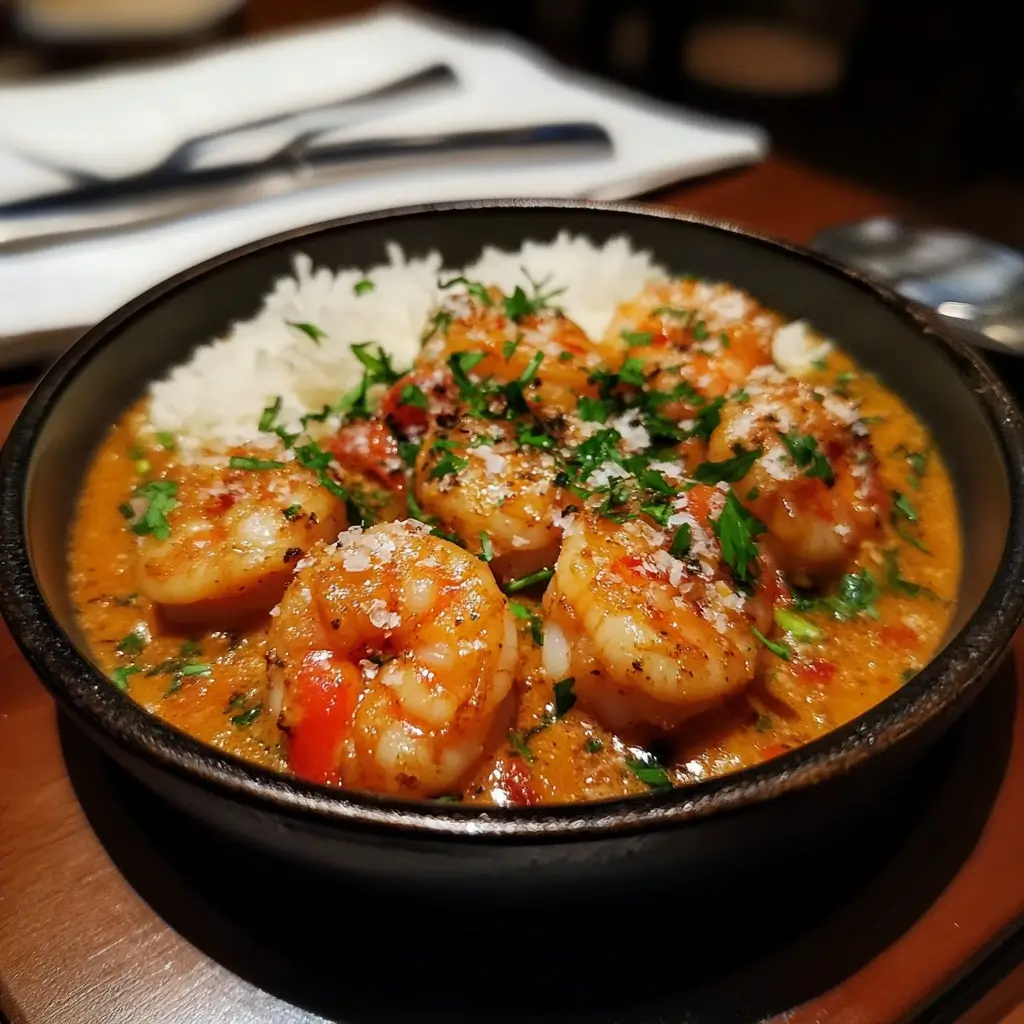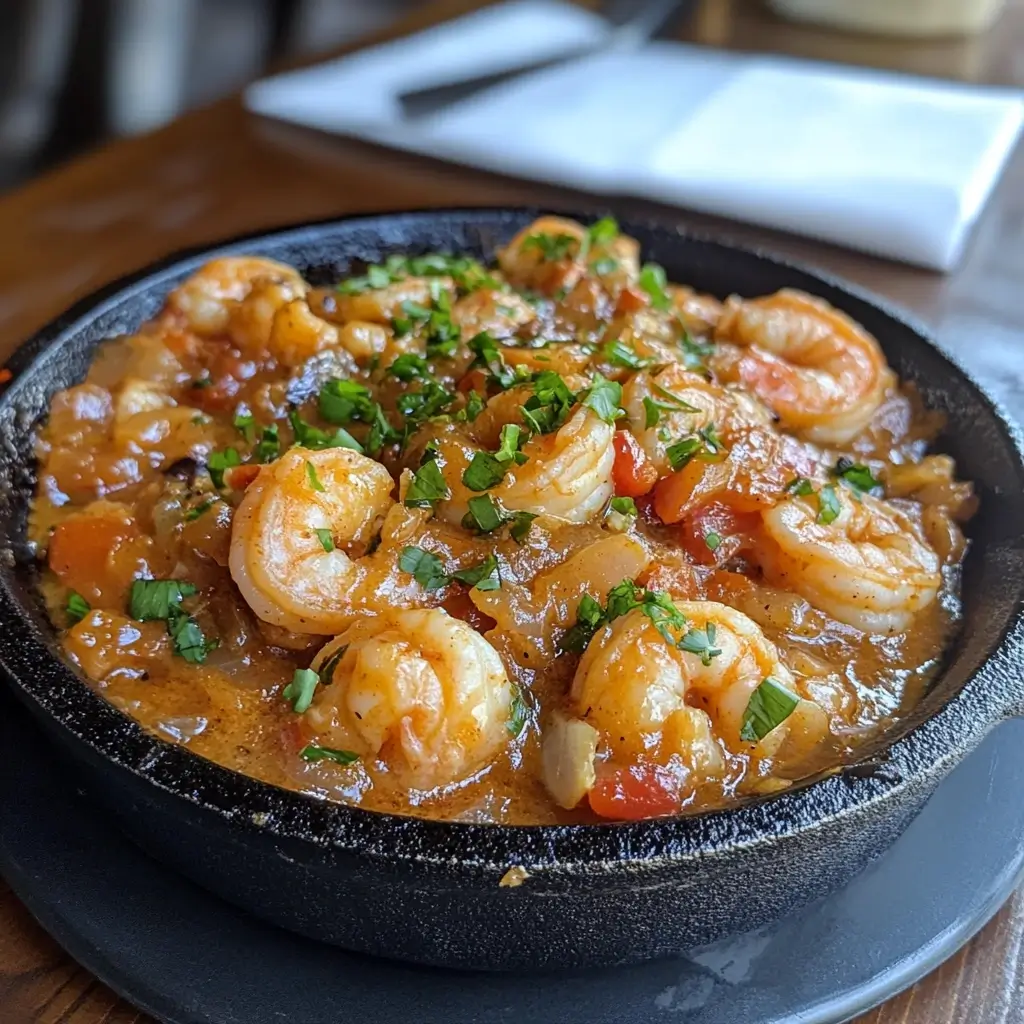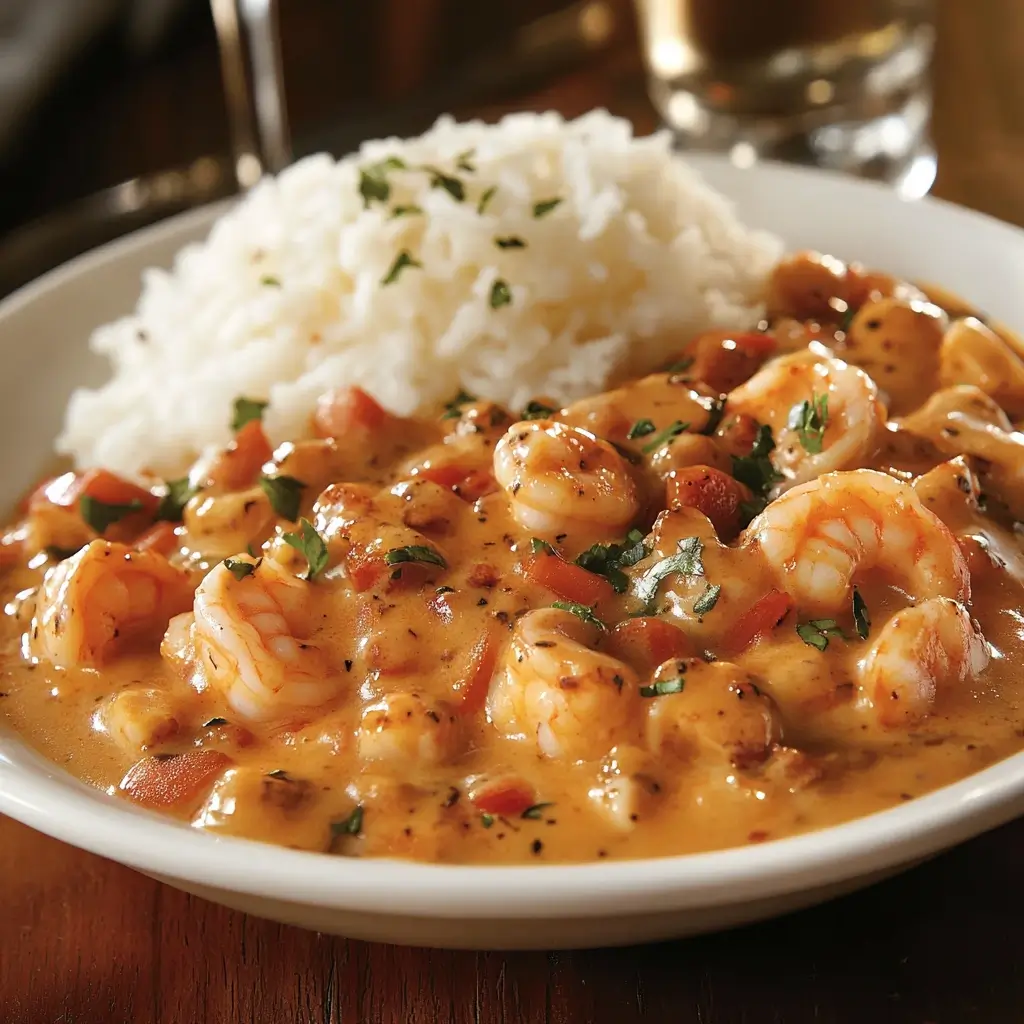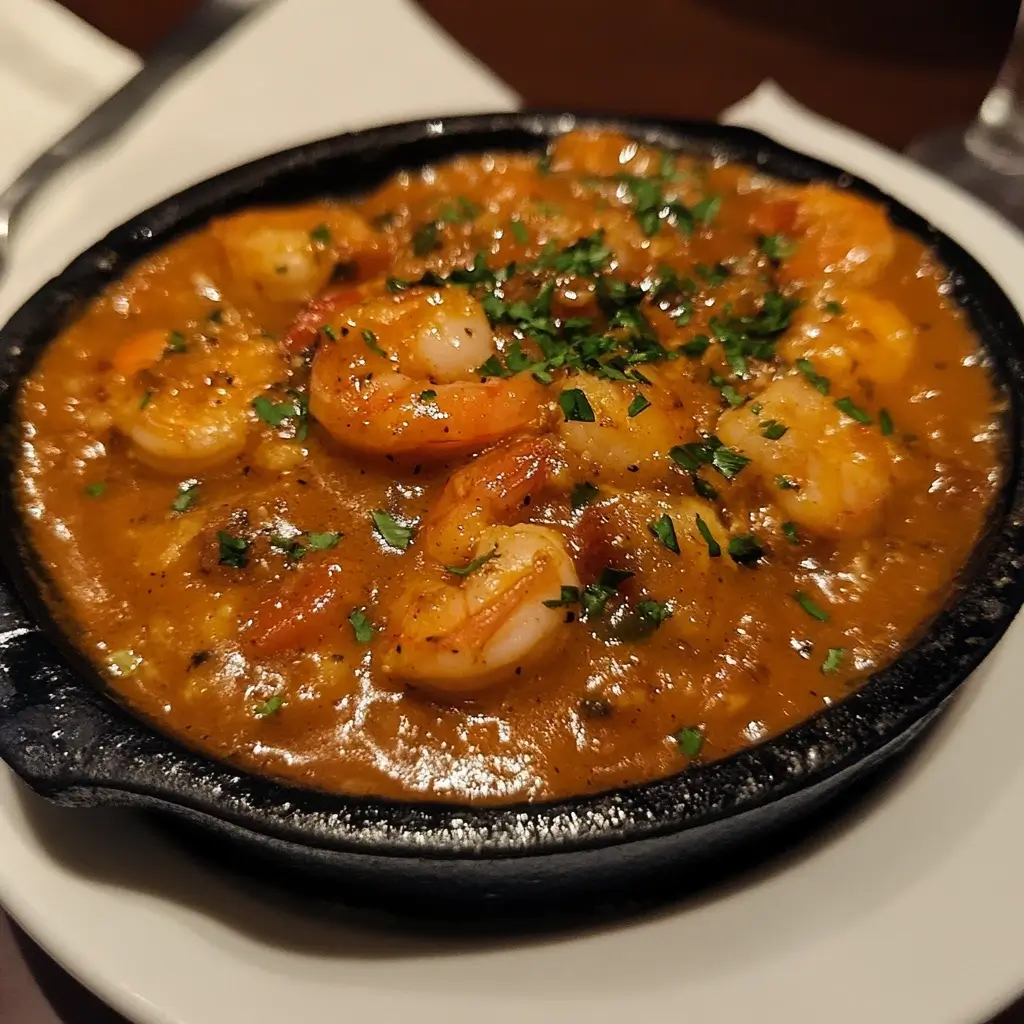Introduction to Shrimp Étouffée Pappadeaux Seafood Kitchen
shrimp etouffee pappadeaux is one of the most beloved dishes in Cajun cuisine, and when served at Pappadeaux Seafood Kitchen , it becomes an unforgettable experience. This iconic restaurant chain, renowned for its seafood specialties, has elevated this classic dish to new heights, making it a must-try for food enthusiasts across the country.
What Makes Pappadeaux’s Shrimp Étouffée Special?
Pappadeaux Seafood Kitchen stands out as a beacon of excellence in the world of Cajun and Creole cooking. Their shrimp étouffée is crafted with precision, using only the freshest ingredients and traditional techniques passed down through generations. The secret lies not just in the recipe but also in the care and attention given to every step of preparation. From selecting premium-quality shrimp to simmering the roux-based sauce until it reaches perfection, Pappadeaux ensures that each bite delivers authentic flavor and texture. Customers rave about the rich, creamy sauce, tender shrimp, and perfectly spiced seasoning blend that makes their version stand apart from others.
A Brief History of Étouffée in Louisiana Cuisine
Étouffée (pronounced ay-two-FAY) originated in the bayous of southern Louisiana, where Cajun and Creole cultures blended to create unique culinary traditions. The word “étouffée” comes from the French verb étouffer , meaning “to smother,” which describes how the main ingredient—typically shrimp or crawfish—is cooked slowly in a flavorful sauce. Historically, étouffée was made with whatever seafood was available locally, often served over steamed rice. Over time, it evolved into a staple dish enjoyed by families and celebrated at festivals throughout the region. Today, it remains a symbol of Louisiana’s vibrant food culture, cherished both within the state and beyond.
Why Shrimp Étouffée is a Must-Try Dish
There’s something magical about shrimp étouffée that captivates diners everywhere. The combination of tender shrimp, aromatic spices, and velvety sauce creates a symphony of flavors that lingers long after the meal ends. At Pappadeaux, the dish is prepared with such care that even those unfamiliar with Cajun cuisine can appreciate its complexity. Whether you’re a fan of spicy foods or prefer milder tastes, shrimp étouffée offers versatility, allowing cooks to adjust heat levels according to preference. Its popularity stems not only from its delicious taste but also from its ability to transport eaters to the heart of Louisiana’s culinary heritage.
Key Ingredients for Authentic Shrimp Étouffée
Creating an authentic shrimp étouffée requires careful selection of ingredients. Each component plays a crucial role in building the dish’s signature flavors and textures.
The Importance of Fresh Shrimp
Shrimp is the star of this dish, so choosing high-quality, fresh shrimp is essential. Look for large, plump shrimp with firm flesh and a mild oceanic aroma. Avoid pre-cooked or frozen shrimp whenever possible, as they lack the freshness needed for optimal results. If buying raw shrimp, peel and devein them before cooking to remove any impurities. For added convenience, some markets sell pre-peeled and deveined shrimp, though these may be slightly more expensive. Remember, the quality of your shrimp directly impacts the final taste of your étouffée.
Building Flavor with Roux
Roux serves as the foundation of shrimp étouffée, providing thickness and depth to the sauce. Traditionally, roux is made by combining equal parts fat (usually butter or oil) and flour, cooked together until they achieve a desired color. In Cajun cooking, darker roux is preferred because it imparts a nutty, caramelized flavor. To make roux at home, melt butter in a heavy-bottomed pan over medium heat, then whisk in all-purpose flour gradually. Stir continuously to prevent burning, stopping once the mixture turns a deep golden brown. While this process takes patience, the reward is worth it—a rich, flavorful base for your étouffée.
Essential Spices and Seasonings
Spices are the soul of Cajun and Creole cooking, and shrimp étouffée wouldn’t be the same without them. Common seasonings include cayenne pepper, paprika, garlic powder, onion powder, thyme, oregano, and bay leaves. Together, these spices create a balanced profile that enhances the natural sweetness of the shrimp while adding layers of complexity. For convenience, many chefs use store-bought Creole seasoning blends, which combine several herbs and spices in one package. However, creating your own blend allows for customization based on personal preferences. Experiment with different ratios to find the perfect mix for your palate.
Vegetables That Add Depth
No étouffée would be complete without the “holy trinity” of Cajun cooking: onions, bell peppers, and celery. These vegetables form the backbone of the dish, contributing sweetness, crunch, and aroma. Begin by chopping them finely to ensure even cooking. Sauté the trinity in hot oil until softened and fragrant, then add minced garlic for extra depth. Depending on the recipe, you might also incorporate diced tomatoes, okra, or green onions for additional texture and flavor. These additions help balance the richness of the roux and shrimp, resulting in a harmonious dish.
“If you’re looking for another fantastic shrimp étouffée recipe to compare or get inspired by, check out this excellent version from Simply Recipes . It’s a great resource for both beginners and experienced cooks alike!”
Step-by-Step Guide to Making Shrimp Étouffée at Home
Cooking shrimp étouffée at home may seem intimidating, but with the right guidance, anyone can recreate this classic dish. Follow this step-by-step guide to master the art of étouffée preparation.
Preparing Your Ingredients
Before starting, gather all necessary ingredients and tools. You’ll need shrimp, flour, butter or oil, the holy trinity vegetables, spices, chicken or seafood stock, and cooked rice for serving. Measure everything beforehand to streamline the cooking process. Peel and devein the shrimp if needed, rinsing them thoroughly under cold water. Pat them dry with paper towels to prevent excess moisture during cooking. Having all components ready ensures smooth execution and minimizes stress.
Creating the Perfect Roux
Making roux is both an art and a science. Start by heating your chosen fat (butter or oil) in a heavy skillet over medium heat. Gradually sprinkle in flour, stirring constantly with a wooden spoon or silicone spatula. Cook the roux slowly, paying close attention to its color. Aim for a peanut butter-like hue for lighter étouffée or a chocolate-colored roux for deeper flavors. Be patient; rushing this step could lead to uneven cooking or burning. Once the desired shade is reached, remove the pan from heat immediately to stop the cooking process.
Cooking the Étouffée Sauce
With the roux ready, return the pan to low heat and stir in the sautéed trinity vegetables. Allow the mixture to cook for a few minutes, ensuring the roux coats the vegetables evenly. Slowly pour in chicken or seafood stock, whisking continuously to eliminate lumps. Add your spice blend, stirring well to distribute flavors. Simmer the sauce gently for about 20-30 minutes, giving it time to develop complexity and reduce slightly. Taste periodically and adjust seasonings as needed.
Adding the Shrimp and Finishing Touches
When the sauce has thickened and achieved the desired consistency, it’s time to add the shrimp. Gently fold them into the sauce, being careful not to overcrowd the pan. Cook the shrimp just until they turn pink and opaque, usually around 3-5 minutes. Overcooking will result in rubbery texture, so timing is critical. Finish the dish with a splash of hot sauce, lemon juice, or chopped green onions for brightness. Serve immediately over steaming white rice for the ultimate dining experience.
Prefer spicy shrimp? Try Camarones a la Diabla!
Serving Suggestions and Pairings for Shrimp Étouffée
While shrimp étouffée shines on its own, pairing it with complementary sides and beverages elevates the meal to gourmet status.
Choosing the Right Rice
Rice is the traditional accompaniment for étouffée, acting as a neutral canvas for the flavorful sauce. Opt for long-grain white rice, which absorbs liquid beautifully without becoming mushy. Brown rice provides a healthier alternative with nuttier undertones, while wild rice adds earthy notes and chewy texture. Regardless of type, aim for fluffy, evenly cooked grains to enhance the overall presentation. Consider preparing extra rice to accommodate second helpings!
Side Dishes That Complement Étouffée
To round out your meal, consider serving side dishes that complement rather than compete with the main course. Cornbread, with its sweet and savory qualities, pairs wonderfully with étouffée’s spiciness. Fried okra brings crispy contrast, while collard greens offer hearty greens to balance richness. Other options include hushpuppies, baked beans, or coleslaw. Don’t forget dessert—beignets dusted with powdered sugar or warm pecan pie make delightful endings.
Beverage Pairings for a Complete Meal
The right drink can enhance the flavors of shrimp étouffée. For wine lovers, a chilled Sauvignon Blanc or Chardonnay cuts through the dish’s creaminess. Beer enthusiasts might enjoy a crisp lager or amber ale, while cocktail aficionados can sip on a Hurricane or Mint Julep for a tropical twist. Non-alcoholic choices like sweet tea, lemonade, or sparkling water provide refreshing alternatives. Match your beverage selection to the occasion and personal preference for maximum enjoyment.
Tips and Tricks for Mastering Shrimp Étouffée
Even experienced cooks encounter challenges when preparing shrimp étouffée. These tips and tricks will help you overcome common obstacles and refine your technique.
Common Mistakes to Avoid
One frequent mistake is rushing the roux-making process, leading to burnt or undercooked results. Always cook roux slowly and steadily, stirring constantly to avoid hotspots. Another pitfall involves overcrowding the pan when cooking shrimp, causing them to steam instead of sear. Work in batches if necessary to maintain proper temperature. Lastly, resist the temptation to skip deglazing the pan after sautéing vegetables; those browned bits contain concentrated flavor.
Adjusting Heat Levels to Suit Your Taste
Cajun cuisine is known for its bold, spicy flavors, but not everyone enjoys fiery dishes. To control heat levels, start with minimal cayenne pepper and gradually increase until satisfied. Alternatively, substitute red pepper flakes or Tabasco sauce for milder spiciness. Conversely, those who crave intense heat can experiment with Scotch bonnet or habanero peppers for extra kick.
Storing and Reheating Leftovers
Leftover shrimp étouffée stores well in airtight containers in the refrigerator for up to three days. When reheating, add a splash of broth or water to restore moisture lost during storage. Microwaving works quickly but may compromise texture; stovetop reheating preserves integrity better. Simply bring the sauce back to a gentle simmer, stirring occasionally, until heated through. Pair reheated portions with freshly cooked rice for optimal freshness.
Conclusion: Celebrating the Joys of Shrimp Étouffée
Shrimp Étouffée, a quintessential dish of Cajun and Creole cuisine, embodies the rich flavors, traditions, and cultural heritage of Louisiana. From its humble beginnings in the bayous to its prominent place on menus at renowned restaurants like Pappadeaux Seafood Kitchen , this dish has captivated food lovers worldwide. Its combination of tender shrimp, aromatic spices, and a velvety roux-based sauce creates an unforgettable dining experience that transports you straight to the heart of Southern hospitality.
Preparing shrimp étouffée at home may seem daunting at first, but with the right techniques, ingredients, and a bit of patience, anyone can master this classic recipe. Whether you’re a seasoned chef or a novice cook, the process of making étouffée is as rewarding as the final result. By carefully selecting fresh shrimp, crafting the perfect roux, and balancing spices to suit your taste, you can create a dish that rivals even the best restaurant versions.
Beyond the main course, pairing shrimp étouffée with complementary sides and beverages elevates the meal to new heights. From fluffy rice and crispy cornbread to refreshing drinks like sweet tea or zesty cocktails, there are countless ways to enhance your dining experience. And for those who love leftovers, proper storage and reheating ensure that every bite remains just as delicious as the first.
Ultimately, shrimp étouffée is more than just a dish—it’s a celebration of community, culture, and culinary artistry. Whether enjoyed in a bustling restaurant or prepared in the comfort of your own kitchen, it brings people together through shared experiences and cherished memories. So next time you crave a taste of Louisiana, don’t hesitate to dive into the world of shrimp étouffée. With its bold flavors and comforting warmth, it’s sure to leave a lasting impression on your palate and your heart.
Bon appétit! Let the joy of cooking and eating this iconic dish inspire you to explore the vibrant world of Cajun and Creole cuisine further. After all, every spoonful tells a story—and yours could be the next chapter in this timeless culinary tradition.
Shrimp Étouffée (Pappadeaux Style)
Equipment
- Large skillet or Dutch oven
- Wooden spoon or spatula
- Knife and cutting board (for chopping ingredients)
- Measuring cups and spoons
- Whisk (optional, for roux)
Ingredients
- For the Roux:
- 1/2 cup all-purpose flour
- 1/2 cup vegetable oil
- For the Étouffée:
- 1 medium onion diced
- 1 green bell pepper diced
- 2 celery stalks diced
- 3 garlic cloves minced
- 1 can 14.5 oz diced tomatoes (with juice)
- 2 cups seafood or chicken stock
- 1 pound medium shrimp peeled and deveined
- 2 tablespoons Worcestershire sauce
- 1 teaspoon hot sauce such as Tabasco, optional
- 1 teaspoon dried thyme
- 1 teaspoon paprika
- 1/2 teaspoon cayenne pepper adjust to taste
- Salt and black pepper to taste
- 2 green onions thinly sliced, for garnish
- Cooked white rice for serving
Instructions
- Make the Roux :
- In a large skillet or Dutch oven, combine the flour and vegetable oil over medium heat. Stir constantly with a wooden spoon or whisk to prevent burning.
- Cook the roux for 15–20 minutes, or until it reaches a dark peanut butter color. Be patient—this step is crucial for flavor.
- Sauté the Vegetables :
- Add the diced onion, green bell pepper, and celery (the “holy trinity”) to the roux. Cook for 5–7 minutes, stirring occasionally, until softened.
- Stir in the minced garlic and cook for 1 minute until fragrant.
- Build the Sauce :
- Add the diced tomatoes (with juice), seafood or chicken stock, Worcestershire sauce, hot sauce, thyme, paprika, cayenne pepper, salt, and black pepper. Stir well to combine.
- Simmer the mixture for 15–20 minutes, allowing the flavors to meld.
- Add the Shrimp :
- Stir in the shrimp and cook for 5–7 minutes, or until the shrimp are pink and cooked through. Avoid overcooking to keep the shrimp tender.
- Serve :
- Ladle the shrimp étouffée over cooked white rice. Garnish with sliced green onions before serving.
Notes
Substitute shrimp with crawfish tails for a traditional crawfish étouffée.
Store leftovers in an airtight container in the refrigerator for up to 3 days. Reheat gently on the stovetop, adding a splash of stock if needed to loosen the sauce.
Freeze portions of the étouffée (without rice) for up to 3 months. Thaw overnight in the refrigerator before reheating.





